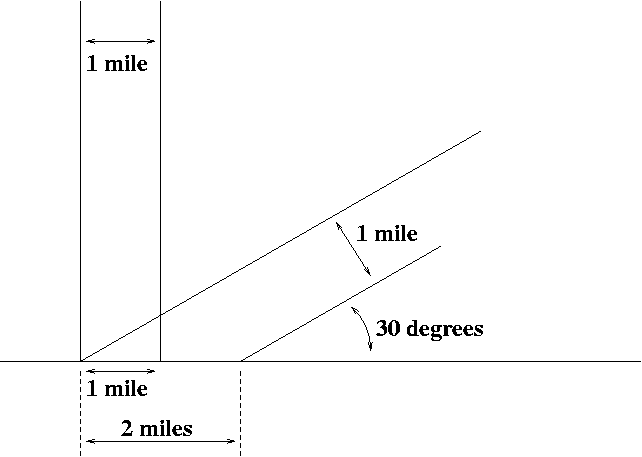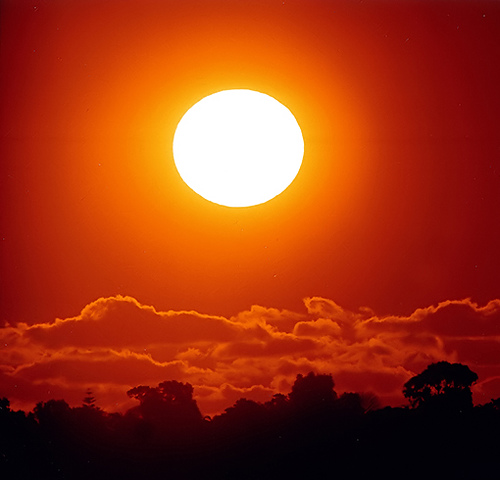Improving your Home?
A step by step guide to plan your
Solar Energy for the Home project
Solar Energy for the Home.... there is a definite trend world-wide to convert to renewable, cleaner energy sources, and we, as responsible home owners, should be on the fore-front of this trend; not only to add immense value to our homes, but also to make a contribution to a sustainable, greener world.
There are several reasons why we as homeowners can now look at other options (apart from the conventional reliance on governments to supply power to our homes) and move towards cleaner, green energy sources, like solar energy for the home.
One of the most important ones is that up till about 2009, it was just not an affordable or a viable financial investment.
The return on investment just did not make sense.
But since then, the cost has come down tremendously. Just look at which factors contributed the most in reducing the price:
- The demand for solar energy for the home is growing and so is the production capacity,
- The efficiency of solar cells is improving constantly through the use of new technologies. This means that less panels are required for a higher solar energy output.
- Improved ways of concentrating solar radiation onto panels. Again, this means that less panels are required for a higher output.
- Scientists are also mimicking natural processes such as photosynthesis in leaves and the reflective properties of butterfly wings to make the panels ever more and more efficient.
- Manufacturing processes are getting more sophisticated and cheaper.
Major and imminent breakthroughs in solar technology will ensure that in the not too distant future we will see entire buildings clad in transparent solar panels and floating solar arrays; not only to provide the building with free energy from the sun, but also to produce sufficient surplus for selling back to the national energy providers.
And with the price of "dirty" energy on the increase, solar energy for the home makes more and more sense every day.
How do we then go about this and where do we start if we want to convert you may ask.....
Well, that is a very good question..... In the following pages I will try my best to give you a good and thorough understanding of the basics of solar energy for the home and how we can plan, design and implement our own solar energy for the home step by step.
Now that we have installed a Solar Water Heating system, it may be time to look at the possibility of going "The Full Monty" if you understand my drift.....
Before we go further into the nitty gritty on how to plan for and implement an effective solar energy for the home system, let's explore the technical detail of:
"How is solar energy used?" (pssssst...... for those of you that are not really interested in the detail, you may skip this page!)
OK, now that that is out of the way, let's see how we go about it.....
As residential solar power setups are an expensive initial financial outlay, it is important that you know what you are getting yourself into and what the requirements are before you rush ahead and install your solar energy system for the home.
Once you have decided to go all-the-way solar-wise, it is imperative that you plan, do research, budget, plan and do more research.....
You do not want to regret certain decisions later on because it wasn't well thought through....
Remember what I said on my home page....?
In order to complete any project successfully, and especially this solar energy for the home project.....
- you need to plan,
- you need to budget, and
- you need to see it through.
So let's start:
1. Maintenance
Although there is some maintenance required on solar panels, it is minimal, but it is still important to do that which is required.
Solar energy for the home systems have no moving parts and once they are securely installed, there isn't much that can go wrong.
Pretty much the only thing you need to do is to:
- regularly inspect them for damage and proper operation, and
- to clean the panels routinely.
Dirty solar panels are inefficient and I will recommend that you clean them (or have them cleaned) at least as often as you clean the windows of your home.
For those of you that never clean their windows (wink, wink....☺), I will recommend at least four times a year, but once a month is better.
Dust and bird droppings can reduce your solar energy for the home system's power output by as much as 30%! So it is very important to clean them regularly.
You can also install an automated sprinkler system, which can be programmed to clean your panels as needed. This is a very good choice if you are prepared to pay the extra cost, especially in dusty areas or close to the sea where salt deposits also reduce the panels' efficiency.
The inverter may eventually have to be replaced, but that may only happen once or twice in the 25 year lifespan of the system.
TIP
I always use a maximum of 25 years as a guideline for any solar energy for the home system life. Most solar energy for the home systems have a 25 year warranty, and as with everything else, solar panels become less efficient over time and will have to be replaced completely at some stage. So when you plan, use this as a guideline.
2. Shade
Shade is a big enemy of solar panels! Just like oil and water simply don't mix, even a small amount of shade during the day on any of your solar panels will drastically reduce your system's output.
Solar panels are designed to convert solar radiation into electricity, and when shadows interfere with that function, the performance of your system will be reduced dramatically.....
- Towering trees around your home will have an effect,
- shadow-casting buildings will have an effect.
- chimneys, and
- even power lines and satellite dishes will have an effect.
So it is important to do a thorough shading analysis of the area (normally the roof) where you want to install your solar energy system for the home. This will reveal the pattern of shade and sunlight through the year. The further you are situated from the earth's equator, the more profound this pattern will become.
For an absolute minimum, there shouldn't be any shade on the panels during the days peak sunny hours (from 10:00 till around 14:00). But remember, the more hours the panels are exposed to sunlight, the more efficient your solar energy system will be.
Shade on even one cell on just one of your solar panels will have a dramatic effect! So don't think for one moment that....
"Ah well, at least most of the panels get sun....."
Yes, it will work, but will it be enough?
Choosing the best areas will maximise your return on investment.
Professional solar installers have instrumentation that will allow them to make educated decisions on where best to install your solar energy panels.
Make use of them!
3. Insolation
Not to be confused with insulation
FACT
Insolation is the measure of solar radiation energy received on a given surface area and recorded for a given time. It is also called solar irradiation.
For our purpose we measure the unit in kWh/m2/day
By now you know that sunlight is key when it comes to solar power, and where you live in the world has a very big influence on how much sunlight reaches ground level at your home.
The higher the insolation is at your location, the more electricity each of your panels will generate. This means that you will then need less solar panels to satisfy the daily energy requirement for your home.
The opposite is true in areas with low insolation. You will now require more panels to create the desired power output to satisfy the daily energy requirement for your home.
Just some basic background on this topic as it is important to understand why this has an influence on the efficiency of your solar energy for the home system.
Don't worry.....I will keep it simple!
The most important thing to know is that the insolation into a surface on earth is greatest when the surface faces the sun directly.
As the angle increases between the direction at a right angle to the surface and the direction of the rays of sunlight, the insolation is reduced in proportion to the cosine of the angle.
(OK, OK.....before your eyes flip back and you go into overdrive, the following picture will explain it in visual terms.....)

In this picture it is clear that a sunbeam 1,6km (1 mile) wide directly above the ground (in other words shining at a 90 degree angle) will have a beamwidth of 1,6km wide when it reaches the earth.
Another beam shining in at a 30 degree angle, distributes its light energy over twice as much area. This means that the amount of light falling on each square mile is only half as much.
(if you are interested in the maths behind this calculation, please go here for more detail)
This effect is the main reason why the polar regions are much colder than the equatorial regions. The surface of the poles are angled away from the sun and that is the reason why the poles receive less insolation.
Direct insolation is equal to the solar constant minus the atmospheric losses due to absorption and scattering. The following will also have an effect on the direct insolation you receive at your exact location:
- The time of day,
(the length of the path the light has to travel through the atmosphere depends on the solar elevation angle) - Cloud cover, and
- Moisture content (also some other impurities).
So, what does this gives us?
In short...... that the sun's rays are attenuated as it moves through the atmosphere and that the average irradiance at the earth's surface is approximately 1kW/m2 for a surface perpendicular to the sun's rays at sea level on a clear day!
But still.....what does it mean?
Every place on earth has a different insolation rating and each of us will have to find the particular rating for where we live. This is easily achievable! Just visit your closest solar energy for the home specialist! They will know all of this.
What I did here was to
empower you with the correct background knowledge
so that not anyone can pretend to be an "expert" and sell you a less than optimal system.
You know what I think about some of the so called "experts" we get in the DIY solar energy for the home industry!!?
I will whisper this...... Not all of them are experts!
4. System Requirements
So we know now how important it is to know what the insolation at your specific location is.
The next thing to determine is how much power do you need!
The first thing to do is to calculate your average yearly electricity consumption. In other words, do a comprehensive energy audit on your usage patterns and consumption. It has to be at least one years average (to include winter and summer months when electricity usage differs).
Now this you do by totaling your kW/h usage over the time from your electricity account and divide it by 12. This will give you an average per month. A very good rule of thumb is to then add an additional 25% to that total to get a final value of what power output you will require from your solar energy for the home system.
This is to allow for future "growth" of your electricity usage..... maybe another baby, or more electronic toys, an additional fridge or freezer, TV's or whatever..... one always find more things to buy.
Although I hope that because you are a responsible home owner going the green route, who cares about our environment, you will, as I did, start to consume less energy and not more!
Once you know that, you can determine the size of the system you will require.
In 2011, the average annual energy consumption of residential users in America was 940 kilowatt-hours (kWh) per month.
Just remember that some people will use a lot more than this and others, of who I hope you are one, will use a lot less.
Something to consider.....
We as the human species consume too much of everything; and energy is one of those things. Consumption does not contribute to a greener world and for sure does not contribute to a sustainable future for our children.
We need to become considerate and
take care of our fragile resources.
By going solar, you are way ahead of most people and as solar energy is a clean, renewable energy, we use less "dirty" energy, meaning we are part of the solution and not part of the problem.
BUT even so, it is important to use less energy!
Now that you know your requirement, it is easy to determine how many solar panels you will need.
If we use the average energy consumption for the average American home and we make provision for some redundancy, we will need 35 kWh per day.
To determine the size of the solar energy for the home system we need, there are many factors to be considered:
- The variable efficiency rating of solar panels,
This can vary anything between 10 and 20% (at best) currently. But solar panels are becoming more and more efficient and it is estimated that 23 to 25% efficiency will be common in 2015. - The output power rating of each solar panel,
Each model is rated by its DC output power under standard test conditions and this also varies considerably and can be anything between 10W to 320W, - Isolation (still has the biggest impact), and so on it goes!
Once you know how many panels you will need, you can determine the size of roof area you will use. As you know by now, there are many factors that have an influence on this, but you can work on an average area of 65 square meters to power your home if you live in an area that receives the average 1kW/m2 of isolation per day.
In South Africa, with its much higher solar irradiance, we can work on less than 50m2 of area required (depending on the efficiency of each panel and the output power of each panel).
Disclaimer: Do NOT take these calculations as gospel.
Please remember that there is a lot that goes into the calculation, and all I am doing is to give you rough estimates of what to expect. For proper planning, you need to design your system with the help of a specialist who will determine the exact sizes, outputs and inefficiencies and therefore the cost.
Once again......
What I did here was to
empower you with some background knowledge
so that not anyone can pretend to be an "expert" and sell you a less than optimal system.
5. System Costs
But assuming this is roughly the size of the system your will require to power your home, how much of a financial investment are you looking at?
The prices of solar panels, racks, inverters and batteries, the so-called hard costs, are falling rapidly and will do so for the foreseeable future.
Soft costs like marketing, installation, financing, and permitting are also falling, although at a much lower rate. But this will gradually become cheaper as online processes and customer acquisition costs are made simpler and easier.
Many countries have incentivised solar adoption through their long-term policies and this also helps to reduce the soft costs. Unfortunately this is not the case in South Africa, as our government insists on continuing with dirty energies like coal and nuclear power.
So where you live will have a major impact on how much your system will cost. Countries like Italy, Germany and Australia are generally 40% cheaper than America, who is probably another 40% cheaper again than South Africa.
In America, the average installed price for a medium sized solar energy system for the home; typically the size we discussed here, is about $5.30 per Watt (price in 2013).
So a 8.75 kW system, as above for the average home, will cost you about $46 500.00. If you take all the tax incentives into account, depending on where you live, the actual cost will be much less!
It is very clear that the cost will vary considerably depending on where you live (in the whole wide world) and that you will have to do your homework well!
Remember:
- you need to plan,
- you need to budget, and
- you need to see it through.
You now have sufficient background information to ask all the relevant questions when your speak to your solar specialist and to ensure that you will get the BEST possible solution for your specific solar energy for the home requirement.
For more information on what will influence and drive down the cost for a solar energy for the home system in future, visit my page here
Return from Solar Energy for the Home to DIY Solar Energy


New! Comments
Have your say about what you just read here! Please leave me a comment in the box below.